Flat Roof Design for Energy Efficiency and Low Carbon Design
- Nuralite Waterproofing

- May 14
- 2 min read
Updated: Aug 29

Membrane systems are evolving to meet the demands of enhanced waterproofing integrity, while flat roofs provide unique opportunities to improve environmental sustainability in the built environment. Each generation of construction must challenge standard practices and reduce the carbon footprint of buildings.
Flat roofs are more than just protective structures—they can improve energy efficiency, support low carbon design, increase green space, and create functional living areas.
Airtight Efficiency with Warm Roof Insulation for Low Carbon Design
Traditional pitched roofs introduce airflow into roof spaces, often causing unintended energy inefficiencies over time. Flat roof systems eliminate this concern by removing the ventilated roof cavity altogether.
Nuratherm Warm Roof systems with continuous insulation maintain a consistent thermal envelope, reducing heating and cooling costs while improving occupant comfort. By incorporating airtight warm roof insulation, buildings achieve better energy performance and contribute to low carbon design strategies.
Green Receptivity: Solar Panels and Living Roofs
Flat roofs are highly receptive to green infrastructure, including:
Solar PV arrays
Living or green roofs
Urban gardens and rooftop agriculture
Using Nuralite Fixing Plates, solar panels can be installed without penetrating the membrane, protecting the roof and supporting renewable energy initiatives. Flat roofs also allow for future adaptability, enabling designers to integrate features that promote low carbon design principles.
Multi-Functional Outdoor Spaces
Flat roofs can be utilised as functional outdoor areas for:
Decking and recreational spaces
Rooftop gardens or community agriculture
Hot tubs or social spaces
These spaces maximise the building’s usability without expanding its footprint, aligning with low carbon design strategies by optimising existing building surfaces.
Retrofits and Carbon Reduction
Roof renewals are increasingly popular, as overlaying existing roofs reduces embodied carbon and construction waste. Nuratherm warm roofs can be retrofitted over existing membrane or metal roofs, improving insulation, extending roof life, and enhancing building energy efficiency.
Warm roofs provide continuous insulation without thermal breaks, ideal for passive house designs and zero-energy buildings. Upgrading existing structures rather than demolishing them is a key low carbon design approach.
Aligning with New Zealand’s Emissions Reduction Plan
MBIE’s Emissions Reduction Plan reinforces the building industry’s role in climate action. By specifying warm roofs, flat roof retrofits, solar panels, and green infrastructure, designers and suppliers can implement low carbon design principles and directly contribute to carbon reduction goals.


